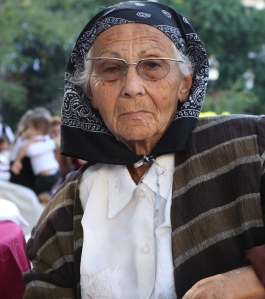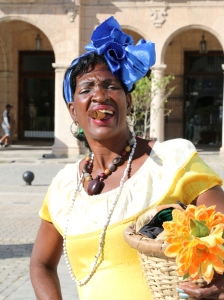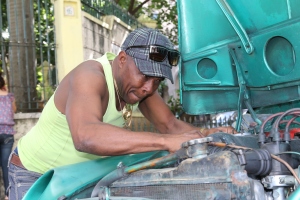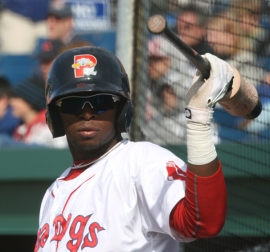Archive for category Photography
Cuba trip exceeds all expectations
Posted by johnlamb1 in Photography, Travel on February 16, 2014

Our journey, a pilgrimage to celebrate the 10th anniversary of St. Nicholas Greek Orthodox Church, located in Old Havana, offered our group of 60 travelers a taste of the island that has been a mystery to Americans for decades.
The food was delicious, and the people were friendly, gracious, and welcoming. Despite having very little, they seem content, and were generally willing to pose for a picture or two for a curious American photographer.
 |
 |
 |
 |
 |
 |
 |
 |
 |
 |
 |
 |
Related Links: Cloud Tours
Follow your intuition to be a better photographer
Posted by johnlamb1 in Business Communications, Employee Communications, Photography, Public Relations, Uncategorized on September 15, 2013
I recently returned from a trip to New York City designed to improve my photography skills. During the four-day stay, I participated in several workshops and also ventured out on my own for many walkabout shoots.
My goal was to become a better photographer, and what I came away with was an interesting, new way to approach photography.
Three of the sessions were offered by The Art of Intuitive Photography, and as the name implies, students are encouraged to follow their instinct and intuition when searching for a good photo, rather than pre-determined guidelines. In other words, look for subject that you connect with, not necessarily a postcard-type photo.
Sounds obvious, but it was eye opening. As workshop participants walked through the streets and parks of the Big Apple, each of us clearly heard a different calling and ventured off to shoot what caught our eyes. One focused on birds and flowers. Another photographed children playing in a fountain.
During my first session, we came upon a statue of George Washington, located on the steps where he took the oath of office. My images of the statue failed to excite me, but the photo of this flute player (above) at the foot of the statue jumped out. Lesson: I’m a better people photographer because I find humans more interesting than a statue.
The Art of Intuitive Photography teaches students to focus on things that interest you by adopting a child-like spirit. One exercise — pretending we were a newborn looking around for the first time — helped drive this home.
On the final day, I ventured to Harlem to capture the culture and personality of the neighborhood. I shot a few buildings and murals, but my mission was to find interesting people. The image to the left depicts a cook on break during his early shift. The photo to the right, a man lighting his morning cigar.
 |
 |
Some people would find the murals and buildings much more interesting, and that’s okay. Whether looking at a photo, painting, or sculpture, beauty is in the eye of the beholder. Thinking about what attracts your eye will make you a better photographer, as I hope it has me.
See more of my New York City photos at: http://www.flickr.com/photos/johnlamb1
Read the BBC article, Trusting your gut: Smart management or a fool’s errand?, which features The Art of Intuitive Photography
Photography 101: Learn from my mistake
Posted by johnlamb1 in Personal development, Photography on August 11, 2013
 I’ve been shooting photos for many years, and am generally happy with the results. But last weekend, I made a mistake that cost me a really nice shot.
I’ve been shooting photos for many years, and am generally happy with the results. But last weekend, I made a mistake that cost me a really nice shot.
Each year, I photograph the team in the Medical Tent at the TD Beach To Beacon 10K road race. There’s not much activity until the wave of runners arrives, so I’ll grab a few shots of the winners crossing the finish line.
As this year’s winner was approaching the ribbon, I decided to try a different setting on my camera. Bad move. The camera is fairly new, and despite having read the instruction manual, the change took longer than expected. By then, the runner was at the finish line and I missed the shot.
The lesson: decide how you want to shoot something ahead of time, and set your camera accordingly. Yes, you should be ready to adapt to the environment, but changing directions seconds before your first shot is asking for trouble.
While I was able to salvage the day with some nice shots, including the one above, I missed the photo I really wanted. That said, the experience left me with a lesson I’ll always remember.
Related posts:
Improve your photography by planning ahead
Look for good photos away from the action
Confession: I love my iPhone camera
Take Better Photos With These 7 Tips
Look for good photos away from the action
Posted by johnlamb1 in Photography, Sports on June 9, 2013
Shooting an event with lots of action or activity can be difficult,  particularly if you don’t have good access or the right equipment for the job.
particularly if you don’t have good access or the right equipment for the job.
But bring the camera because there are ways to capture some nice images, even if you’re not wearing a press pass. Most of the examples below are from sporting events, but the same concepts work for many situations, from high school plays to concerts.
Take your eye off the ball
The photo above is from a high school softball game. I was too far away to catch much of the action at home plate. Then I noticed the intensity of the first baseman. She had a laser focus on every pitch, and fortunately, was close enough for me to get a nice shot that really showed that intensity as she waited for the next pitch. I shot several images, and this is my favorite.
 What else is going on?
What else is going on?
Sticking with photos from the diamond, this next image (left) came at Hadlock Field, home of our Portland Sea Dogs, a minor league affiliate of the Boston Red Sox. We had great seats for the game, but far enough away that capturing good action shots was difficult.
As fate would have it, the batters in the on deck circle were well within range, and I was able to snap off a couple of images of several players.
Remember the importance of warming-up
One of my favorite photos is of former Boston Bruins goalie Tim Thomas. On this  particular day, our seats were in the balcony of Boston’s TD Garden, about seven stories above the ice, so anything other than a wide shot was unlikely. However, we went down to ice level to watch warm-ups, and I snagged this shot with my trusty point and shoot camera by prefocusing and waiting for Thomas to turn. Tip: to prefocus, point the camera at your subject and hold the shutter release button half-way down.
particular day, our seats were in the balcony of Boston’s TD Garden, about seven stories above the ice, so anything other than a wide shot was unlikely. However, we went down to ice level to watch warm-ups, and I snagged this shot with my trusty point and shoot camera by prefocusing and waiting for Thomas to turn. Tip: to prefocus, point the camera at your subject and hold the shutter release button half-way down.
I have similar photos of other goalies, all captured in the same way. I focus my attention on the goalies because the other players move too quickly for a point and shoot to follow.
Hint: you can shoot hockey and other ice events through the protective glass. Try to find a clean spot, and hold the camera against the glass. The same holds true when shooting through a screen at baseball or softball games.
Look left, and then right
 The shot on the left came at Boston’s annual Greek Independence Day Parade. I took hundreds of images of the parade, but this one, of a marcher prior to the event, is among my favorites. The shot came shortly after I arrived and was scoping out the parade route. I turned around, and there he was.
The shot on the left came at Boston’s annual Greek Independence Day Parade. I took hundreds of images of the parade, but this one, of a marcher prior to the event, is among my favorites. The shot came shortly after I arrived and was scoping out the parade route. I turned around, and there he was.
Note that the cloudy weather helped this photo, as a bright sun would have cast a shadow on his face, making it darker than the background.
In the world of photography, clouds can be helpful in the right circumstances.
Sounds like a good topic for a future blog.
Be the early bird
Finally, one of the best pieces of advice I picked up over the years is simple: get there early. Several years ago, the late Tim Russert was speaking at a conference I attended. Being a big fan of his, I wanted a good photo, but knew the hall would be packed with thousands.
 Russert’s remarks were first thing in the morning, so I arrived early, scouted out the available best seat, and planted myself there. This image, taken with a basic point and shoot camera, served its purpose, and I came away with a photo of Russert that marks the day.
Russert’s remarks were first thing in the morning, so I arrived early, scouted out the available best seat, and planted myself there. This image, taken with a basic point and shoot camera, served its purpose, and I came away with a photo of Russert that marks the day.
Confession: I love my iPhone camera
Posted by johnlamb1 in Personal development, Photography on March 31, 2013
 I was a little slow coming around, but count me among the fans of the camera on the iPhone (or any mobile phone for that matter). While it lacks the firepower of a SLR (Single Lens Reflex) camera or a good point and shoot, it certainly has a place in your photography toolkit.
I was a little slow coming around, but count me among the fans of the camera on the iPhone (or any mobile phone for that matter). While it lacks the firepower of a SLR (Single Lens Reflex) camera or a good point and shoot, it certainly has a place in your photography toolkit.
My iPhone now accompanies me on all walks, and it has produced some nice photos, including those you see here. Additionally, photo apps let you manipulate your images quickly and easily. I used Snapseed to modify the clock tower image, left. It was my first time try with the app, and while there was likely some beginners luck involved, the process took only a couple of minutes.
I recently joined Instagram, which has fast become one of my favorite social media outlets (look me up at JohnLamb1). You can shoot, upload, edit, and post a photo in minutes. In addition to being quick, it’s very easy to learn. Give it a try.
Know your limitations
Yes, there are downsides to a camera phone. The flash lacks the power to light a dark, indoor scene, and focusing on moving subjects is nearly impossible. That said, the convenience of a camera on your phone opens a world of possibilities.
Learn the camera’s strengths and limitations, mix in a dose of creativity, and you’ll be please with the results. For example, if you’re at a sporting event, or a child’s play, try to shoot when movement is minimal. Bonus: sometimes the best shots are away from the action.
As with anything, the more you use the camera, the better your images. I try to shoot at least one nice image during each walk.
Digital Duct Tape
In addition to taking great images, a camera phone boasts a list of duct-tape-like uses that grows almost daily. Here’s a dozen to get you started:
- Take a photo to remember where you parked.

- Document a fender bender.
- Photograph household items and receipts for proof during insurance claims.
- Photo and send documents or recipes to friends.
- Photograph your shopping loyalty card and store them in an app such as Key Ring.
- Photograph an item you’re thinking of buying.
- Photograph and post items on eBay, Craig’s List, etc.
- Take photos with ZZ Top when you see them in L.L.Bean at 1 am.
- Post vacation photos on Facebook, Twitter, etc.
- Sneak a photo of your camera-shy aunt who still thinks your mobile phone is only a phone.
- Impromptu photos in a restaurant, mall, dog park, etc., anytime you don’t have your full camera.
- Impress your date by creating a slide show of your evening.
Your turn. How do you use the phone on your camera?
Who’s coming to dinner?
Posted by johnlamb1 in Photography, Public Relations, Uncategorized on October 15, 2012
You’re having a dinner party and can invite anyone you’d like — living or dead. Who would you pick?
Here’s my list:
Bill Cosby
He’s been a favorite in my family for decades. He’s smart (earned a Ph.D. in Education) and of course, very, very funny.
Winston Churchill
One of the most important statesmen of the last century, Churchill held the British together through World War II. He also received the Nobel Prize in Literature, and was the first person to be made an Honorary Citizen of the United States. I bet he’d give a terrific toast.
Arnold Schwarzenegger
He’s reached the top in three careers — bodybuilding, acting, and politics — and I’d love to ask him about his keys to success.
Helen Keller
Blind, deaf, and mute, she graduated from college (with honors), and became an author and humanitarian, as well as a role model for those overcoming adversity.
Edward Bernays
The father of modern Public Relations. It would be interesting to hear his thoughts on the evolution of our profession. Plus, I could call the dinner a professional development opportunity, and write the cost off.
Missy Franklin
The next great Olympian, and by all accounts, humble and down-to-earth.
Annie Leibovitz
One of the greatest portrait photographers of our time. I could spend hours asking about her craft.
Your turn …. who’s on your list?
Improve your photography by planning ahead
Posted by johnlamb1 in Employee Communications, Personal development, Photography, Public Relations on September 3, 2012
 I worked as an assistant for a talented photographer who taught me a great deal about the craft. He generally had a vision of each shoot beforehand, and showed me that a little planning and imagination go a long way in capturing better photographs.
I worked as an assistant for a talented photographer who taught me a great deal about the craft. He generally had a vision of each shoot beforehand, and showed me that a little planning and imagination go a long way in capturing better photographs.
Novice photographers often arrive with good intentions but no plan of action. If you know the basics of photography and give some thought about potential photos ahead of time, you’ll see a difference in the quality of your work.
Let’s look at a few easy tips to help you on your photographic journey (BTW, click on an image to enlarge it).
Try something different
I took one of my favorite photos, above, while working at L.L. Bean. Our employee newsletter featured a profile of the manager of retail marketing, a woman who juggles many, many tasks. I wanted the photo to metaphorically show how much she did, and came up with the idea of having her juggle Bean boots in front of the company’s flagship store. Before shooting, I drew a sketch of my vision and then photographed a coworker juggling Bean Boots to see if the concept would work. Finally, I built a frame to hang some of the boots. It’s funny, people think this is Photoshop, but it’s not.
Arrive early for warm-ups
You’re going to a sporting event, but your seats are too far away for a memorable shot. Warm-ups often present some great opportunities for photos. In a previous blog, Take Better Photos with These 7 Tips, I wrote about shooting away from the action, and this is a somewhat similar concept.
Here, I snapped a photo of former Boston Red Sox manager Terry Francona walking back to the dugout during warm-ups. Yes, it’s not the same as getting a great action shot during the game, but when your seat is in the back row of the bleachers, this is a pretty good alternative. The same principle — shoot before the action starts — applies if you’re covering a corporate event or your kids’ soccer game.
Note how the color of Francona’s jersey makes the image pop a bit more. When I walk into a room looking for subjects, one of the first things I see are the colors of people’s clothes.
Have fun with your photos
 During my tenure at L.L.Bean, the company opened several new retail stores, including one in Burlington, Massachusetts, just down the road from Lexington, where the Revolutionary War began.
During my tenure at L.L.Bean, the company opened several new retail stores, including one in Burlington, Massachusetts, just down the road from Lexington, where the Revolutionary War began.
A couple of weeks before the store opening, I grabbed a pair of Bean Boots, and headed to a reenactment of the war’s first battle. One of the actors agreed to pose for a shot wearing the boots, and we used the image on our employee website.
The caption we used suggested the Colonists won the war because Bean Boots had kept their feet warm and dry feet. But for the record, the first pair of Bean Boots came along about 140 years after the war.
Be open for other possibilities
I once read about an old-school photography exercise that directed students to walk for a predetermined time, then stop and take a photo from where they stopped. The exercise is said to sharpen your ability to find a subject, regardless of where you are.
And sometimes you look up, and a photo is waiting to be taken …
Each year, Maine maple syrup producers welcome the public to see the syrup-making process in person. After shooting some of the Maine Maple Sunday activities, I happened to look back at the barn, and saw this face peeking out. Apparently the goat was intrigued by the activity. I went to photograph maple syrup, but came away with a goat photo. The paper I shot for put it on the cover.
Ask for help, especially with children
 A kid on a tire swing is a photo waiting to be taken. Trouble is, kids don’t act natural around cameras.
A kid on a tire swing is a photo waiting to be taken. Trouble is, kids don’t act natural around cameras.
I saw our young friend on the tire swing, and even with a 400mm lens, knew he’d see me taking his photos.
So, I enlisted his father to talk to him (okay, distract him) as I snapped away. The original, a slide, lost some color in its conversion to digital, but you get the point.
Some kids become hams when a camera appears, while others shy away, so having something or someone to hold their attention helps you capture a more natural moment.
Stake out your spot
Author Mitch Albom was speaking about his best-selling book Tuesdays with Morrie at a large conference I attended a few years ago. He’s a terrific speaker, and I wanted a photo. Unfortunately, because I flew to the conference, the only camera I packed was my small point-and-shoot camera.
So, I arrived really early, and took the best seat I could find: front row, a little off-center. An easy, but often overlooked way to get a better photo.
Hang around
I’d never seen Craigslist founder Craig Newmark until he spoke at a similar event I attended.
He’s a very bright guy, and an engaging speaker, and I thought there might be a good photo opportunity.
Unfortunately, the lighting onstage wasn’t enough for my little camera, so I decided to wait until he finished and the crowd began to disperse. He was on stage chatting, and I moved in close enough to use my flash and snapped a couple of quick photos.
Remember, the flash unit on most point-and-shoot cameras is good for about 10-12 feet.
Take Better Photos With These 7 Tips
Posted by johnlamb1 in Employee Communications, Photography on June 4, 2012
It’s graduation season, Father’s Day is around the corner, and the annual flurry of summer activities is fast approaching. Your camera is at the ready, but you want to take you photos to the next level.
Or perhaps your boss is asking for more and better photos for your newsletter or company Facebook page.
No sweat. Follow these 7 simple tips and you’ll see better photos the next time you say cheese.
Get closer
The biggest and most common mistake I see is not being close enough to your  subject. In general, you don’t need to see your subjects’ feet. While there are exceptions, most times you’ll be fine with a waist-up shot. Think of trying to fill the frame with your subject. Additional benefit of moving closer: if you’re using a camera’s built-in flash, its most effective within 8-10 feet.
subject. In general, you don’t need to see your subjects’ feet. While there are exceptions, most times you’ll be fine with a waist-up shot. Think of trying to fill the frame with your subject. Additional benefit of moving closer: if you’re using a camera’s built-in flash, its most effective within 8-10 feet.
Take lots of photos
A professional photographer will take dozens of images to get one good shot. Yet, amateurs often shoot one or two images, and then move on. If you need an important photograph, don’t rely on a couple of images. Move around, try different settings or poses, changes lenses, shoot with and without flash — the more variations the better.
Use your flash — outside
When people face the sun, they squint, and when they turn away from the sun, you get shadows on their face. So, get the sun out of your subject’s face, and use your flash to knock out the shadows.
Shoot away from the action
Some of the best sports photos I’ve taken were of players warming up before the  game, taking a breather during a time out, or celebrating after a victory. Yeah, you’re not getting the game action, but sometimes the best way to capture the thrill of victory or the agony of defeat is looking the other way. The photo of Red Sox Legend Johnny Pesky, left, was taken prior to a game.
game, taking a breather during a time out, or celebrating after a victory. Yeah, you’re not getting the game action, but sometimes the best way to capture the thrill of victory or the agony of defeat is looking the other way. The photo of Red Sox Legend Johnny Pesky, left, was taken prior to a game.
Get a ‘safe shot’
This is a corollary to the previous tip. If you have a tough photo assignment, shoot something as a back-up, in case you can’t get the action shot. Years ago, I was hired to photograph a Boston Pops concert in Portland. There was one catch: I wouldn’t be allowed near the stage during the show. Fortunately, I had backstage access prior to the concert, and took a nice photo of my client with the conductor. Thanks to a good telephoto lens, I was also able to capture some good images of the show, but having the pre-concert photo took loads of pressure off.
Make your subject feel comfortable
While some people love being photographed, many shy away. When faced with a hesitant subject, spend a few minutes chatting to help them relax. Be confident in your ability to capture a flattering image. I tell people we’ll keep shooting until we get something they like.
Plan ahead
To paraphrase a popular real estate term, the key to successful photography is practice, practice, practice. My first paid sports photography assignment was a basketball game at a local college. A few days prior, I found another college game, and shot that as a test, trying different lenses, angles, etc. That day showed me what worked and what I needed to change.

